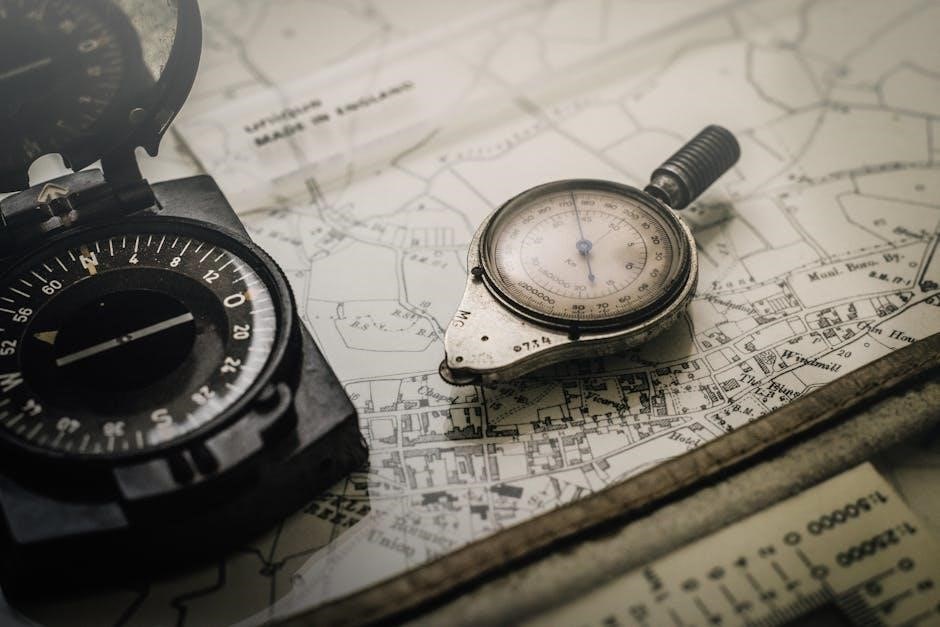Drafting instructions provide guidance on legislation drafting, enabling drafters to understand the purpose and content of instructions, utilizing online resources and manuals effectively always in the drafting process now.
Purpose of Drafting Instructions
The purpose of drafting instructions is to provide a clear understanding of the legislation’s objectives and requirements, allowing drafters to create effective and accurate drafts.
Drafting instructions serve as a guide for drafters, outlining the necessary steps and considerations for drafting legislation.
They help ensure that the drafted legislation meets the intended purposes and goals, and that it is consistent with existing laws and regulations.
The purpose of drafting instructions is to facilitate the drafting process, making it more efficient and effective.
By following drafting instructions, drafters can produce high-quality drafts that require minimal revisions, saving time and resources.
Overall, the purpose of drafting instructions is to support the drafting process, ensuring that the resulting legislation is well-structured, clear, and effective in achieving its intended objectives.
This is achieved through careful consideration of the legislation’s purpose, scope, and requirements, as outlined in the drafting instructions.
Content of Drafting Instructions
The content of drafting instructions typically includes a clear statement of the legislation’s purpose, objectives, and scope.
It also outlines the key concepts, definitions, and terminology to be used in the draft.
Additionally, drafting instructions may provide guidance on the structure and organization of the draft, including the arrangement of clauses and sections.
They may also include information on the legislative context, such as relevant existing laws, regulations, and policies.
The content of drafting instructions is critical in ensuring that the draft is accurate, comprehensive, and effective in achieving its intended objectives.
Drafting instructions may also include examples, illustrations, or other supporting materials to help clarify complex concepts or ideas.
Overall, the content of drafting instructions provides a detailed roadmap for drafters to follow, enabling them to produce high-quality drafts that meet the required standards and expectations.
This content is essential for effective legislation drafting.

Preparation of Drafting Instructions
Preparation involves gathering information and resources to create effective drafting instructions always utilizing online guides and manuals properly in the process now effectively.
Initial Drafting Stage
The initial drafting stage is a critical part of the drafting instructions process, involving the creation of a preliminary draft. This stage requires careful consideration of the purpose and content of the instructions, as well as the use of clear and concise language. The drafter must also ensure that the draft is well-organized and easy to follow, using headings and subheadings to break up the text. Additionally, the drafter should utilize online resources and manuals, such as the Drafting Style Manual or the Bill Drafting Manual, to guide the drafting process. By following these guidelines, the drafter can create a high-quality initial draft that effectively conveys the intended message. The initial draft serves as the foundation for further refinement and revision, ultimately resulting in a finalized set of drafting instructions that meet the needs of the user. Effective drafting is essential.
Checklist for Drafting Instructions
A checklist for drafting instructions is a valuable tool, helping drafters to ensure that all necessary elements are included. The checklist typically covers key matters such as the purpose and scope of the instructions, the intended audience, and the specific requirements and constraints. It may also include considerations such as clarity and concision, organization and structure, and the use of clear and concise language. By using a checklist, drafters can systematically review and refine their work, identifying and addressing any potential issues or deficiencies. This helps to ensure that the final product is of high quality and effective in conveying the intended message. The checklist can be tailored to meet the specific needs of the project, and can be used in conjunction with other resources and guidelines to support the drafting process and produce effective instructions. This approach saves time.

Guidance on Drafting Legislation
Legislation drafting requires careful guidance and instruction, utilizing resources and manuals to ensure accuracy and effectiveness always in the process of creating new laws and policies now online.
Drafting Requirements for Memoranda to Cabinet
Drafting requirements for memoranda to cabinet involve providing clear and concise information, utilizing a specific format and style, as outlined in drafting manuals and guides, to ensure effective communication and decision-making, with a focus on clarity and precision, enabling cabinet members to make informed decisions, and including all necessary details and supporting documentation, while adhering to established protocols and procedures, and considering the potential impact and implications of the proposed legislation or policy, and ensuring that the memoranda is well-organized and easy to follow, with a clear and concise summary of the key points and recommendations, and including any relevant background information or context, and utilizing proper grammar and spelling, and being mindful of the tone and language used, to ensure that the memoranda is professional and respectful, and effective in conveying the intended message.
Drafting Cabinet Documents on Legislation
Drafting cabinet documents on legislation requires careful consideration of the proposed law’s intent, scope, and potential impact, as well as its consistency with existing laws and policies, and adherence to established drafting conventions and protocols, to ensure that the document is clear, concise, and effective in conveying the intended message, and that it provides a comprehensive overview of the proposed legislation, including its key provisions, benefits, and potential risks, and that it is well-organized and easy to follow, with a clear and concise summary of the key points and recommendations, and that it includes all necessary details and supporting documentation, such as regulatory impact statements, and that it is reviewed and revised as necessary to ensure that it meets the required standards and is ready for submission to cabinet, and that it is drafted in a professional and respectful tone.

Processes and Timelines for Drafting
Processes and timelines for drafting involve setting deadlines and milestones, utilizing project management tools effectively always in the drafting process now every day.
Developing and Submitting Cabinet Drafting Instructions
Developing and submitting cabinet drafting instructions involves several key steps, including preparing a clear and concise draft, reviewing and revising the document, and obtaining necessary approvals.
The guide provides information on the processes and timelines for developing and submitting cabinet drafting instructions, as well as tips for ensuring that the instructions are complete and accurate.
The importance of careful planning and attention to detail cannot be overstated, as the quality of the drafting instructions can have a significant impact on the success of the legislation.
By following the guidelines and best practices outlined in the guide, drafters can help ensure that their cabinet drafting instructions are effective and well-received.
Overall, the process of developing and submitting cabinet drafting instructions requires careful consideration and attention to detail, but with the right guidance and support, it can be a successful and rewarding experience.

Understanding the Drafting Process
Understanding the drafting process is crucial for effective legislation, requiring careful analysis and attention to detail always in the process now with online guides and resources available.
Five Stages of Drafting
The five stages of drafting involve a thorough understanding of the message to be conveyed, followed by careful planning and analysis.
The drafter must seek to understand the purpose and intent of the legislation, and then to be understood by the reader.
This requires a clear and concise writing style, with attention to detail and accuracy.
The five stages are a crucial part of the drafting process, and are essential for producing effective and well-written legislation.
Online resources and guides are available to assist drafters in understanding and applying the five stages.
These resources provide valuable information and support, and can help to ensure that the drafting process is completed efficiently and effectively.
By following the five stages, drafters can produce high-quality legislation that meets the needs of the reader and achieves its intended purpose.
This is an important aspect of the drafting process, and is essential for good governance and effective law-making.
Importance of Understanding the Message
Understanding the message is crucial in drafting instructions, as it enables the drafter to convey the intended meaning effectively.
The message must be clear, concise, and easily understandable by the reader.
This requires the drafter to have a thorough understanding of the subject matter and the purpose of the legislation.
Online resources and guides provide valuable information on how to craft a clear and concise message.
The drafter must consider the audience, context, and purpose of the message to ensure it is communicated effectively.
A well-crafted message is essential for effective legislation, as it helps to avoid confusion and misinterpretation.
By taking the time to understand the message, drafters can produce high-quality legislation that achieves its intended purpose.
This is an essential aspect of the drafting process, and is critical for good governance and effective law-making, with drafters playing a key role.
